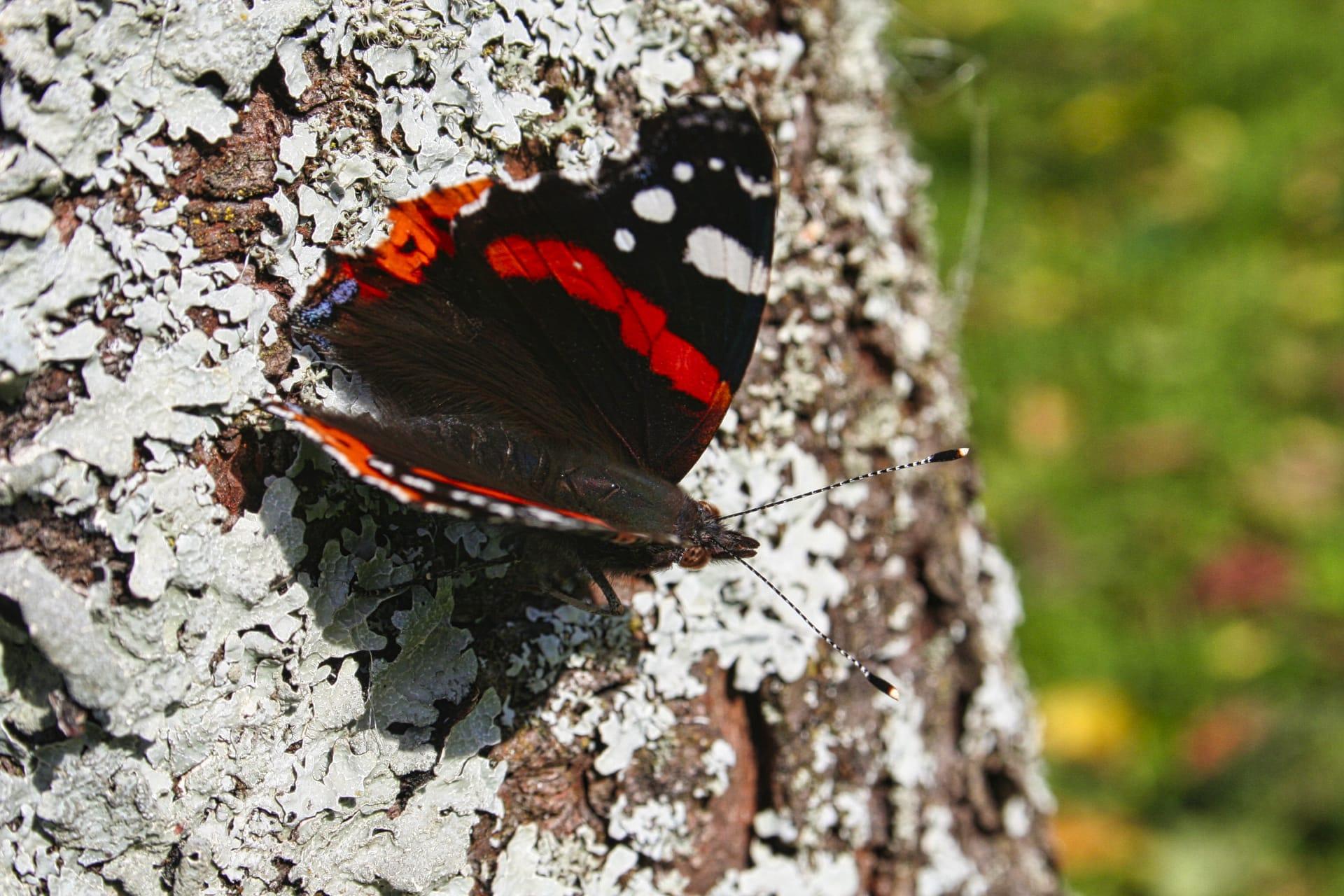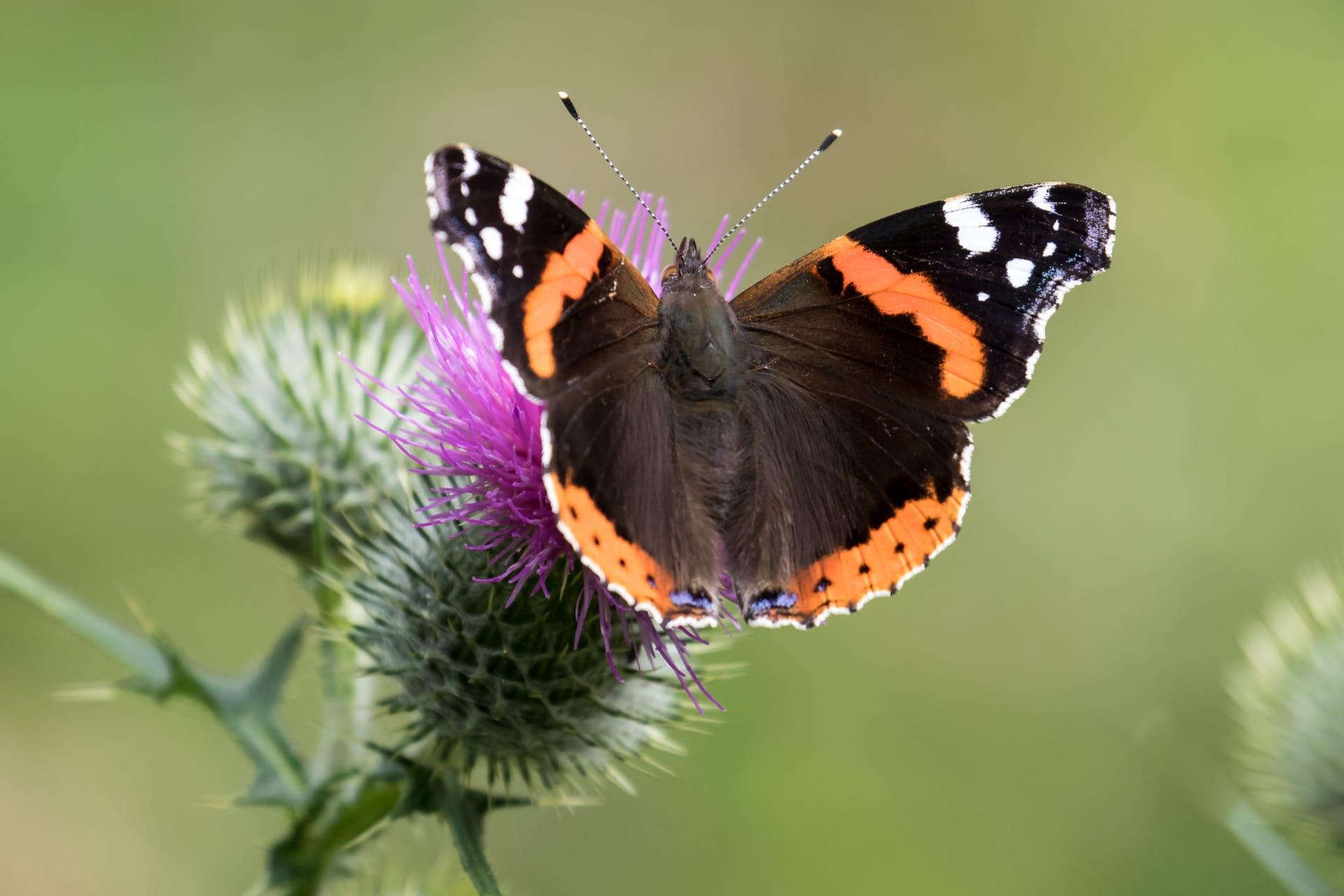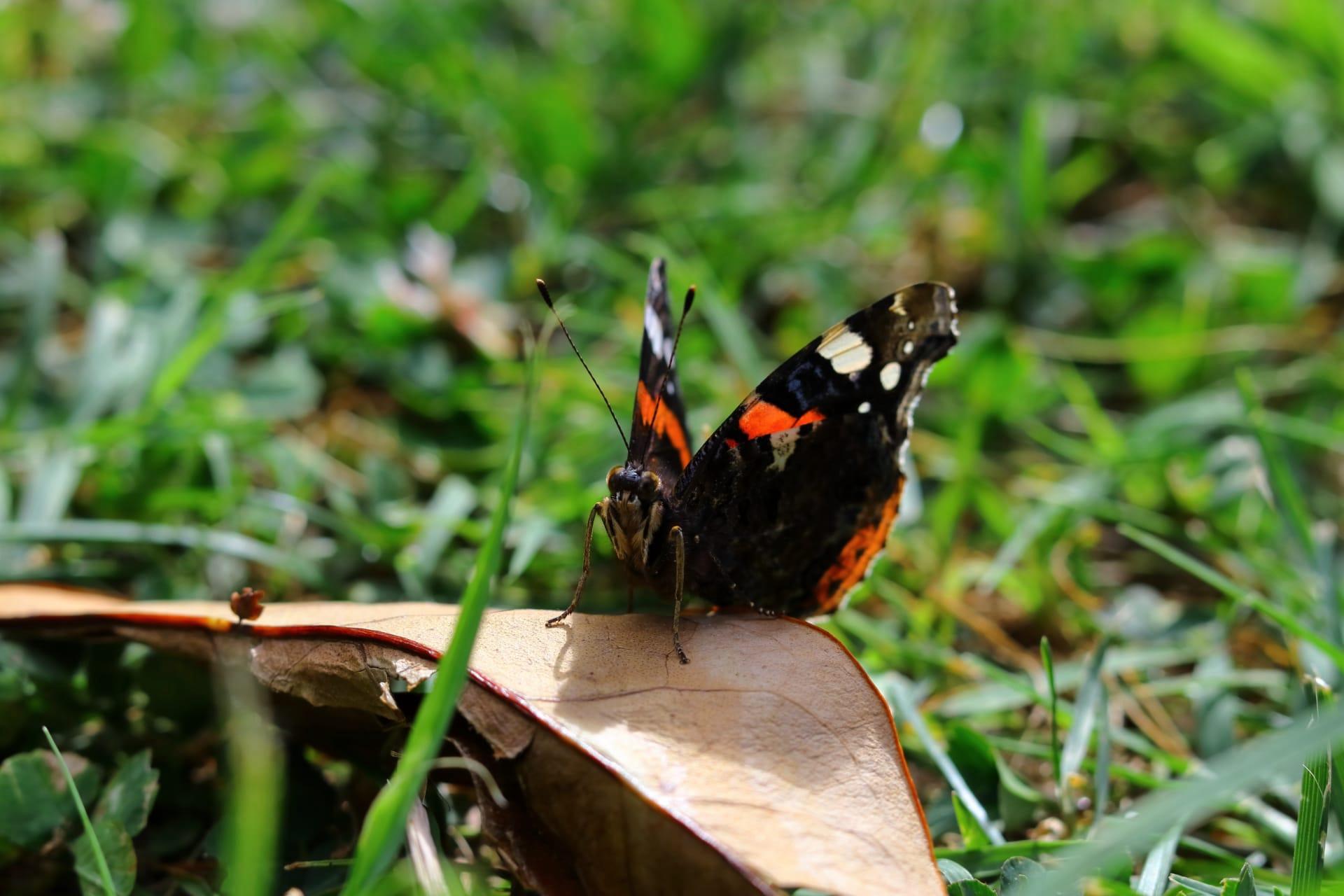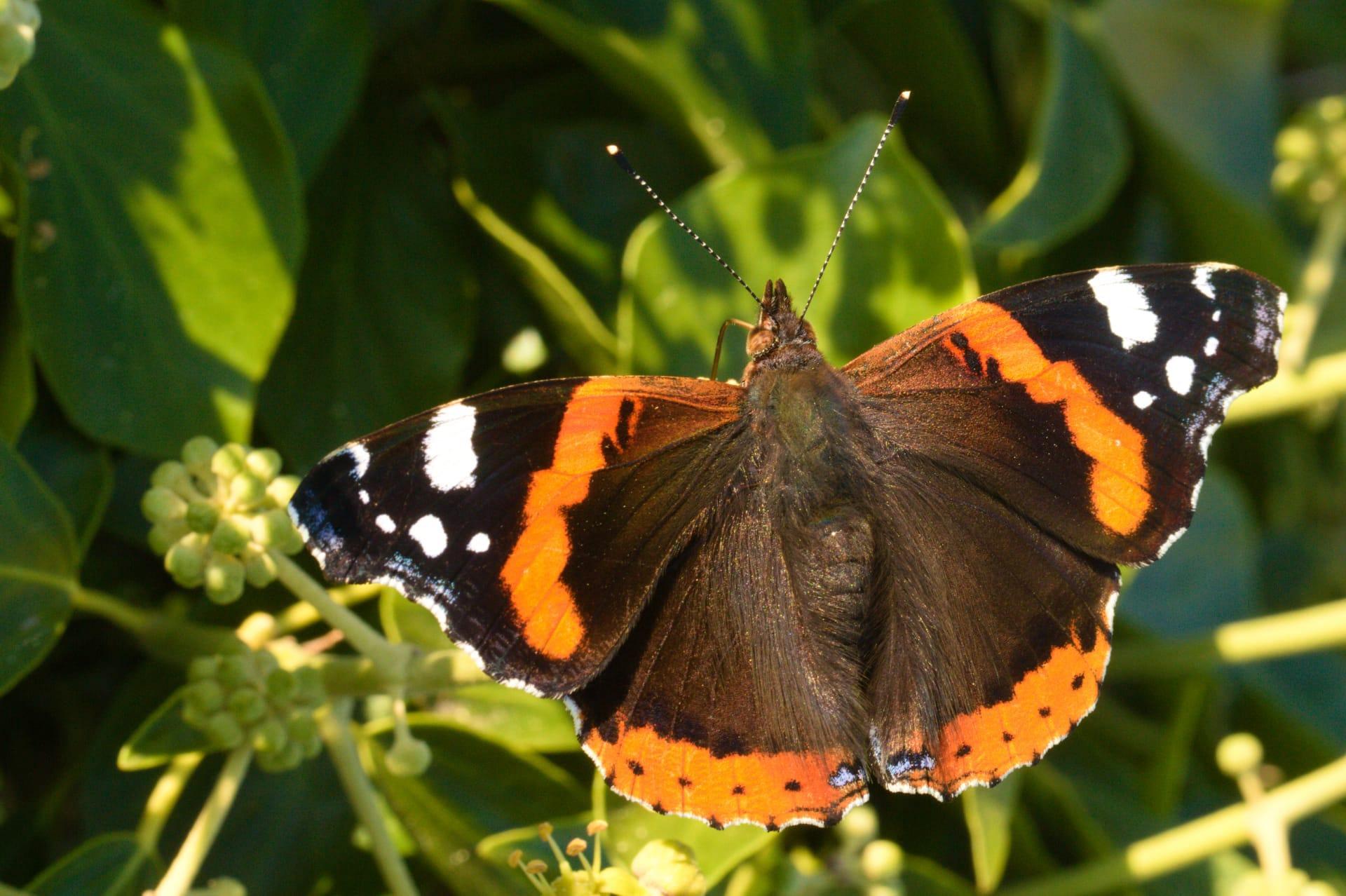1
The Red Admiral Butterfly, scientifically known as Vanessa atalanta, is a master of migration. These butterflies embark on a remarkable journey each year, traveling up to 3,000 miles. What makes this migration fascinating is that it's not a single butterfly making the entire journey, but rather a series of generations. Each generation flies a part of the total distance, breeding along the way, and passing the baton to the next generation to continue the journey.
Another intriguing aspect of the Red Admiral is its varied diet. Unlike many other butterfly species that are strictly herbivorous, the Red Admiral is known for its eclectic taste. It feeds on over 30 different kinds of plants. Among its favorites are nettles, where the females also prefer to lay their eggs. The caterpillars are particularly fond of nettles, munching on them until they're ready to transform into butterflies.

2
The Red Admiral's vibrant wings serve as more than just a beauty feature; they are integral to its survival. The upper side of their wings is a striking combination of black, orange, and white, which is essential for thermoregulation. By basking in the sun with their wings wide open, they absorb sunlight and maintain their body temperature. This is crucial as butterflies are cold-blooded and rely heavily on external heat sources.
Another fascinating aspect is their territorial behavior, especially in males. Red Admirals are known for aggressively defending their territory against intruders, including other males and even large insects or birds. They often choose sunlit spots as their territories and chase away any potential rivals, showcasing an intriguing aspect of their behavior often unnoticed.

3
Did you know that the Red Admiral Butterfly has a unique relationship with humans and urban environments? Unlike many wildlife species that struggle in urban areas, Red Admirals thrive in these environments. They are frequently found in gardens, parks, and even city centers. This adaptability is partly due to their non-specific nectar preference, allowing them to feed on various flowers commonly found in urban landscapes.
During colder seasons, the Red Admiral exhibits a unique behavior known as overwintering. Some populations in colder regions don't migrate but choose to hibernate instead. They find shelter in crevices, under loose bark, or inside buildings to survive the winter. This ability to switch between migration and hibernation based on environmental conditions is a remarkable survival strategy.

4
The lifespan of a Red Admiral is another interesting facet. In the wild, they typically live for about six to twelve months. However, this lifespan can vary significantly depending on several factors such as climate, predation, and availability of food sources. In warmer climates, their life cycle accelerates, leading to several generations within a single year, whereas in cooler areas, their development slows down, leading to fewer generations.
Red Admirals also exhibit a fascinating behavior known as puddling. This behavior is seen mostly in males who gather on wet soil, dung, or decomposing matter to extract nutrients like salts and amino acids. These nutrients are essential for successful reproduction. Puddling provides these butterflies with resources that are not readily available in their typical nectar diet, showcasing an adaptive behavior to maximize their reproductive success.

5
When it comes to reproduction, the Red Admiral has an intriguing approach to ensuring the survival of its offspring. Females carefully choose the leaves they lay their eggs on, preferring plants that will provide the best food source for the caterpillars. After hatching, the caterpillars create a small shelter by curling up the edges of the leaf and securing it with silk. This unique behavior provides them with protection from predators and environmental elements during their vulnerable developmental stage.
The Red Admiral's chrysalis stage, the transition phase from caterpillar to butterfly, is a marvel of nature. The chrysalis undergoes a dramatic transformation over about two weeks. It starts as a small, inconspicuous object but then changes color and texture, eventually revealing the butterfly inside. This metamorphosis is not only a crucial part of their life cycle but also a symbol of transformation and renewal in various cultures and art forms.